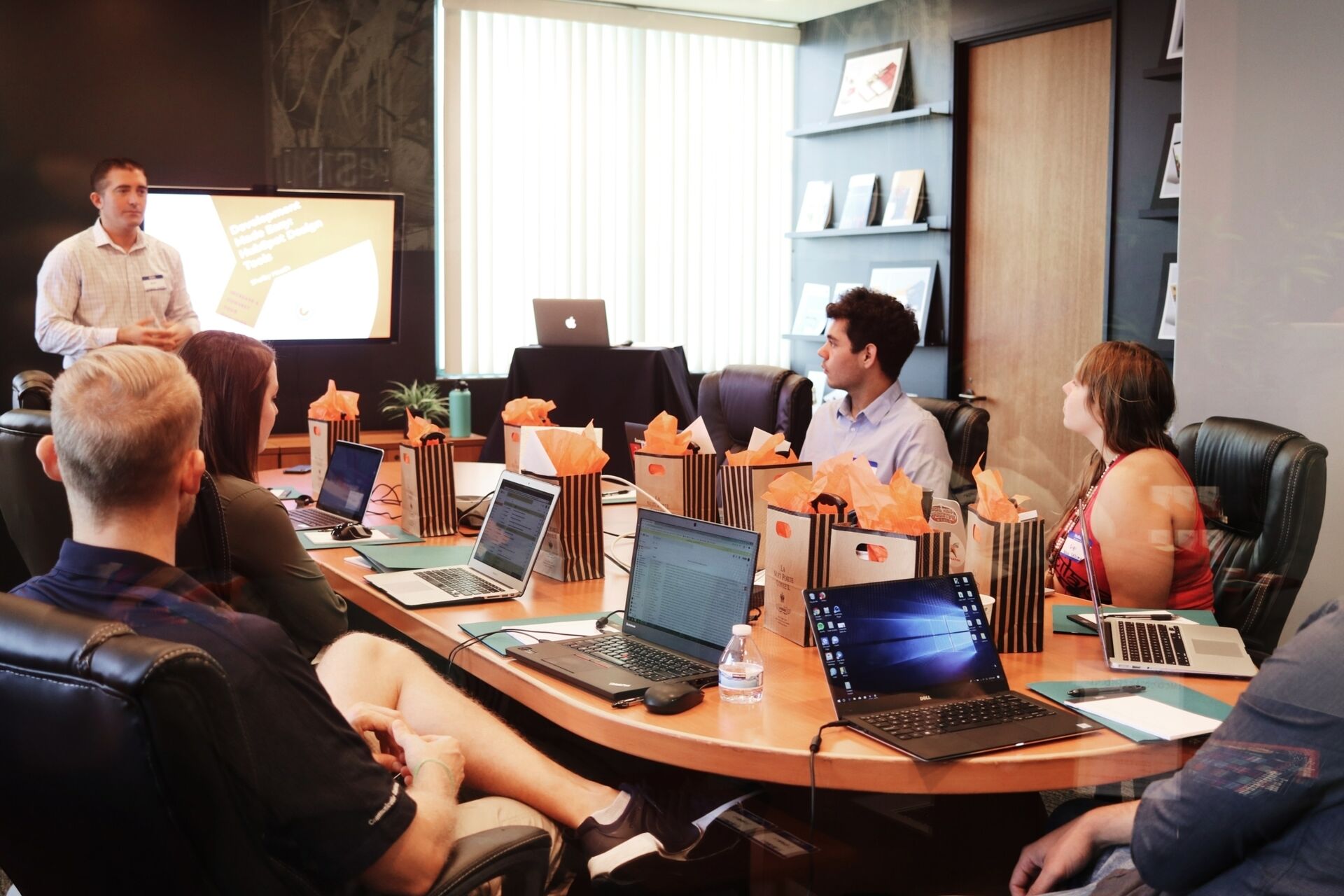CPDs for Architects – Some useful advice when architects won’t let you into their offices
Most aspects of architectural practice will eventually return to some kind of normality and even office-based CPD may resume. But in this guest post from Paul Iddon, he explains that the provision of CPD to build relationships with architects and specifiers is one area that has shifted inexorably to the digital domain.

A guest blog post from Paul Iddon DipArch RIBA
Quite a few people are making bold claims about the ‘new normal’ in architecture practice, such as a preference for home working and the end of offices as we know them. I take a different view.
Architects from a range of practice types will welcome staff back in numbers. The collaborative needs for successful design, the mentoring of younger staff and the irreplaceable social dimensions of practice life will be irresistible.
Nevertheless, some things have changed significantly. Architects have been ‘nudged’ into working and thinking in new ways. This includes how they interact with manufacturers’ sales and specification strategies.
Research confirms that CPD is central to an architect’s engagement with construction product manufacturers. It has been mutually beneficial to both parties as a transaction. The architect gets lunch, learning and hands on with samples. The manufacturer specification sales representative gets face time with their target audience. Win-win.
But there has always been some reluctance, a vague feeling that they are in a sales pitch even when they aren’t.
Architects are a specific audience and unlike most other construction professionals. Certain personality traits seem to dominate – self-reliance, individualism and detachment. This is largely a product of the way their training ‘selects’ for these traits. Being an architect (as I know only too well) can be a lonely place, even in a large practice. You are caught between the competing motivations of client and contractor, whilst still feeling a responsibility to wider society.
The advent of Covid has allowed architects and practices to move into CPD webinars with ease. They can participate but remain self-contained. They miss the lunch, but feel they are being more efficient. This is driven by serious concerns about social distancing and protecting staff.
Clearly, this is a major shift for sales and marketing strategies, which have operated in a more or less similar way for decades. Change is inevitable.

But there are compensations and opportunities:
- Webinars can mean more attendees – people can participate from home or in the office. They will feel more relaxed and engage more.
- No lunch, far less hours spent on busy roads. Less cost.
- The ability to speak to several practice offices at once – for the same company or multiple practices. Particularly useful when in the past, a long journey could result in frustration when only a couple of people attend.
- A more sustainable way to operate – although I have not yet seen anyone promoting this as a benefit.
- Improved wellbeing for the presenter when travel stresses are removed.
But a face-to-face CPD is different to a webinar in a similar way that theatre differs from TV programmes. There are subtle changes that need to be made for a successful outcome:
- Performance has to be more flowing and polished. Rehearsal is critical.
- Presentation techniques need to be sharpened. The material needs to be adapted to be shorter, more punchy and engaging.
- Careful thought needs to be given to the presentation progression – the clicks and animations have to work harder.
- The content needs to be more succinct and graphically excellent.
- Videos need careful thought. Both Zoom and Teams are only as good as the presenter’s broadband connection.
- Promotion should also be far more engaging and creative.
I have run the Manchester Society of Architects’ weekly CPD webinar programme for some time. I rehearse with less confident presenters and brief them on the best way to present. I observe the attendee activity and the level of engagement. I watch as they start to log out and note how we need to manage expectations of both the presenter and the audience. We have had 90 attendees on some CPDs, but the average is around 35-40. Not bad for an hour’s work.
Most aspects of practice will eventually return to some kind of normality and even office-based CPD may resume, but my conversations with architects indicate this is one area that has shifted inexorably to the digital domain. Don’t expect this to change for a long time and when it does, it won’t be like the old days.

Do you have a project you want to talk to us about?
LMC is a PR and communications consultancy on a mission to help our clients change the construction, property and built environment sectors for the better.
Using our specialist knowledge and skills, we help clients to achieve their change agenda, building their reputation and profile around the topics that matter most.
If you need help to meet your ambitions and make a difference, please get in touch for an informal discussion about how we can help.